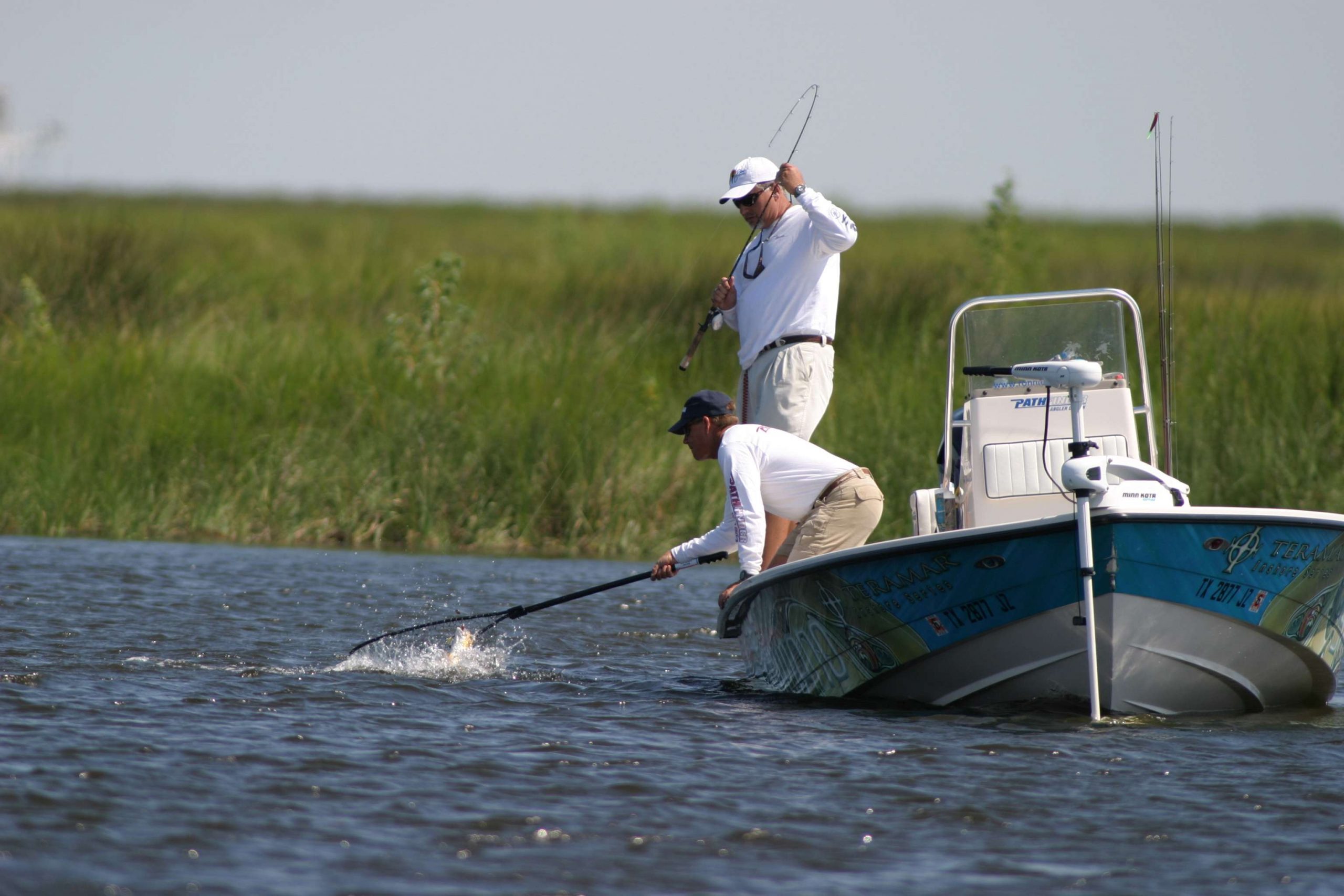
Perhaps as varied as the number of ways to catch redfish is the number of ideal scenarios favored by pursuers when it comes to many anglers’ preferred method of catching. Sight fishing is known almost universally as the most exciting way to put slot fish in the livewell, but there are numerous schools of thought as to the perfect set-up.
In no certain order, there are big schools of fish, smaller schools of fish, pods of fish, singles, doubles and triples. There are waking fish, tailing fish, finning fish and mudding fish. Slow cruisers, fast cruisers, floaters, pushers, happy rollers, amblers, sweepers, and the list goes on and on. The vernacular is as varied as it is colorful, but one thing is for certain: not all visible fish are created equal in the eyes of tournament fishermen.
“It really depends on the situation,” said Ben Alderman, who teams with fellow South Carolinian Ronnie Pitts to form one of the only teams outside the big three states of Florida, Louisiana and Texas. “In Florida, I like to see what I call floaters. These are fish that are sitting at the surface of the water, which can be relatively deep. They’re happy, un-pressured fish, they’re lit up and feeding.
“The only thing about them is that they’re usually in big schools of 50 to even 300 or so fish, which can spook when you hook one.”
Louisianan Anthony Randazzo, who teams with Billy Walbaum, has similar thoughts on large schools of fish and their propensity to gum up the works in a carefully located target area. His preference is small pods of three-to-six fish.
“You want a situation where there’s a competition for your lure, where they want to outdo one another,” said Randazzo. “The singles are not always easy to convince.”
Along with the fish’s competitive nature, smaller groups of fish allow for the opportunity to bag a limit in one fell swoop.
“If you’ve got six pods of six fish each in a spot, you’ve got a good shot at getting two good fish,” Randazzo said. “Hopefully, you’re able to pick out the right ones.”
Behavior-wise, Randazzo prefers seeing fish swimming at a slow steady pace.
“I want fish that are definitely feeding, but that are also going slow enough to be aware of their surroundings; fish that are able to pick up on scented baits or the vibration of bait,” he said.
Floridian Ken Chambers, who pairs with Indiana’s Mark Miller, prefers the company of singles and pairs moving down a shoreline, a scenario which gives him a good idea of what he’s throwing at.
“I don’t really like tailers because you don’t really know what you’re throwing at, especially schools of them like they’ve got in Texas,” Chambers said.
High riding fish that are “just ambling along” is the situation Chambers prefers and the redfish’s propensity for zigzagging in its pursuit of sustenance doesn’t bother him, either.
“You know he’s looking for something to eat in that instance,” Chambers said. “If he turns at the wrong moment when your bait hits the water, that’s the beauty of having a partner.”

Chad Breland, with partner John Stubbs, has definite preferences in what he likes to see, but follows a consistent theme in enjoying seeing cruising, active fish – preferably two or three of them.
“I like fish that are visibly waking in the top ten inches of the water,” Breland said. “And I like them to be patrolling back and forth along the bank, looking for food. The singles, I’ve found, are just not quite as ambitious as you’d like.”
Breland even has a specific bait preference in which the fish are pursuing, which goes along with his weapon of choice and its enticing vibration.
“I like finger mullet about four inches long,” he said. “It goes right along with the bait I like to throw, which is a spinnerbait.”
Texan Kris Culpepper doesn’t hesitate when describing his weather-specific game plans in the southern part of the state, though one of them is certainly not without controversy.
“If the wind is blowing, we’re drifting flats and looking for singles floating on the surface, usually between nine thirty and two o’clock,” he said. “If it’s calm, we’re going to be running schools.”
Culpepper, who teams with twin brother Jon, doesn’t apologize for the practice of running his main engine up on schools of fish on the large flats in south Texas. He said that there are few boat lanes in these waters and that normal boat traffic is something the fish are used to, and the tactic is only effective on dead calm days.
“For south Texas tournaments, we don’t even have a trolling motor on the boat,” Culpepper said. “We’re either running schools or making long power drifts across flats, looking for feeding fish on top of the water.”
For Louisiana waters, Culpepper prefers singles or significantly spaced doubles. This gives them the ability to make a judgment on exactly what they’re throwing at and will most likely not spook an area when hooked.
“It’s so important over there to control every single fish that comes along,” he said. “I’d rather just see a fish in the water rather than seeing them waking. Waking fish are fine if they’re coming to you, but if they’re moving away, I’d rather not have to chase them.”




